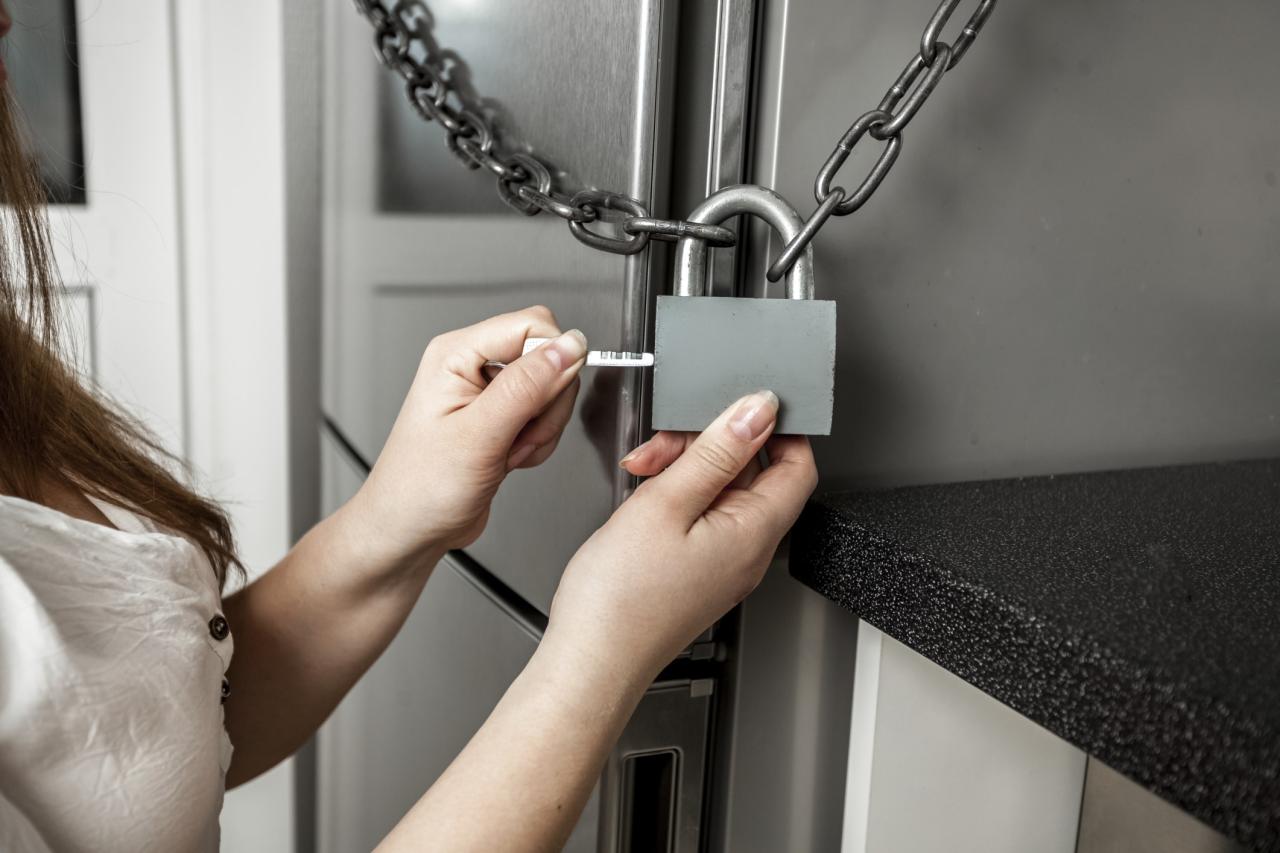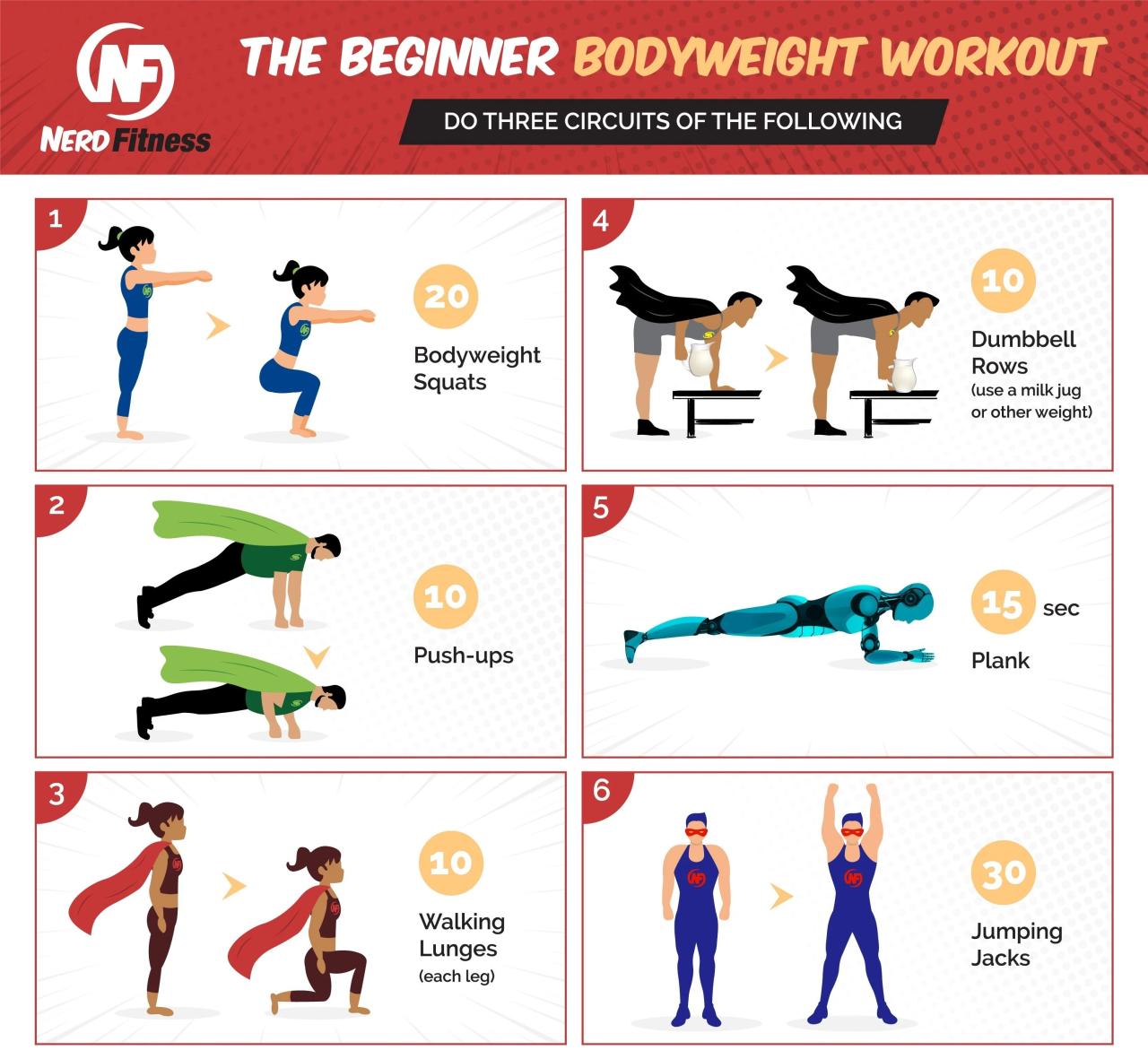
11 Ways to Prevent Weight Gain During Shelter at Home
11 Ways to Prevent Weight Gain During Shelter at Home – We’ve all been there. Stuck at home, with the fridge just a few steps away and the temptation to snack constantly. But with a little planning and effort, you can prevent weight gain during this time.
It’s not about depriving yourself, but rather about making smart choices and finding ways to stay active and engaged. This guide will provide you with practical tips and strategies to navigate the challenges of weight management while staying at home.
From mindful eating to managing stress and incorporating physical activity into your routine, this guide will help you stay on track with your health goals. It’s about creating a balanced lifestyle that works for you, even when you’re confined to your home.
Mindful Eating Habits
Mindful eating is a powerful tool for managing weight, particularly during periods of restricted activity like shelter-at-home. It involves paying attention to your food choices and eating experience, promoting a more conscious and healthy relationship with food.
Mindful Eating Practices
Mindful eating practices encourage you to savor your meals and connect with your body’s hunger and fullness cues. This approach helps you make more informed food choices and avoid overeating.
- Pay Attention to Hunger Cues:Before eating, assess your hunger level on a scale of 1 to 10, with 1 being not hungry and 10 being extremely hungry. This helps you identify genuine hunger and avoid eating out of boredom or stress.
- Eat Slowly:Take small bites, chew thoroughly, and savor each flavor. This allows your body time to register fullness signals, preventing overeating.
- Eliminate Distractions:Turn off the TV, put away your phone, and focus solely on your meal. Distracted eating can lead to mindless overconsumption.
- Choose a Dedicated Meal Time:Setting aside specific times for meals helps establish a routine and prevents impulsive snacking.
- Practice Gratitude:Take a moment to appreciate the food you’re eating, acknowledging its source and the effort involved in preparing it.
Mindful Eating During Shelter at Home
Applying mindful eating practices at home is easier than you think. Here are some practical examples:
- Plan Your Meals:Plan your meals and snacks in advance to avoid impulsive choices and ensure you have healthy options readily available.
- Cook More Often:Cooking at home allows you to control ingredients and portion sizes, making it easier to practice mindful eating.
- Practice Mindful Snacking:If you feel the urge to snack, pause and assess your hunger level. Choose healthy snacks like fruits, vegetables, or nuts instead of processed foods.
- Create a Relaxing Eating Environment:Set a table, light candles, or play calming music to create a peaceful atmosphere for your meals.
Staying Active at Home: 11 Ways To Prevent Weight Gain During Shelter At Home

Staying active is crucial for maintaining weight during shelter-in-place orders. When you’re confined to your home, it’s easy to fall into sedentary habits, which can lead to weight gain. Physical activity helps you burn calories, build muscle, and improve your overall health.
Home-Based Exercises
There are many ways to stay active at home without needing expensive equipment or a gym membership. Here are some examples of home-based exercises that can be done with minimal equipment:
Remember to consult your doctor before starting any new exercise program.
Exercise Examples
| Exercise Type | Duration | Frequency | Benefits |
|---|---|---|---|
| Bodyweight exercises (push-ups, squats, lunges, planks) | 15-20 minutes | 3-4 times per week | Increased muscle mass, improved strength and endurance, better posture |
| Cardiovascular exercises (jumping jacks, burpees, high knees, mountain climbers) | 20-30 minutes | 3-4 times per week | Improved cardiovascular health, increased calorie burn, reduced risk of chronic diseases |
| Yoga or Pilates | 30-45 minutes | 2-3 times per week | Increased flexibility, improved balance, reduced stress and anxiety |
| Dance workouts | 30-45 minutes | 2-3 times per week | Fun and engaging way to get exercise, improved coordination and rhythm |
Sample Workout Routine
Here’s a sample workout routine you can follow at home:* Warm-up:5 minutes of light cardio, such as jumping jacks or jogging in place.
You know, I’ve been thinking about those 11 ways to prevent weight gain during shelter at home, and it really boils down to understanding how your body works. One key factor is knowing about the 3 hormones to keep in mind for weight loss , like leptin and ghrelin, which play a huge role in your appetite and metabolism.
Once you understand how they work, you can make better choices to prevent weight gain during these challenging times.
Strength training 10-15 repetitions of each exercise:
Push-ups
Squats
Staying active is key to preventing weight gain during shelter at home, and that includes taking care of your joints. If you’re new to exercise, it’s important to start slow and gradually increase the intensity. Check out a beginners guide to joint health for tips on protecting your joints while getting in shape.
Once you’ve got a good foundation, you can start incorporating more challenging activities like strength training and cardio to burn calories and build muscle.
Lunges
Plank
One of the 11 ways to prevent weight gain during shelter at home is to stay hydrated, which can be challenging when you’re not moving around as much. If you’re looking for a change from plain water, check out 7 water alternatives for hydration ranked , which includes options like herbal teas and infused water.
Staying hydrated is important for your overall health, and it can help you feel fuller, which can be beneficial when you’re trying to manage your weight during a time of limited activity.
Cardio 20 minutes of high-intensity interval training (HIIT), alternating between 30 seconds of intense exercise (such as burpees or mountain climbers) and 30 seconds of rest.
Cool-down 5 minutes of stretching.
This is just a sample routine, and you can adjust it to fit your fitness level and preferences. Remember to listen to your body and take breaks when needed.
Managing Stress and Emotional Eating

Stress and emotional eating are closely intertwined, often leading to weight gain. When we’re stressed, our bodies release hormones like cortisol, which can trigger cravings for sugary and fatty foods. These foods provide a temporary sense of comfort and pleasure, but they can also contribute to weight gain in the long run.
Managing Stress Effectively
Managing stress effectively is crucial for preventing weight gain. Here are some strategies:
- Deep breathing exercises can help calm your nervous system and reduce stress hormones. Inhale deeply through your nose, hold your breath for a few seconds, and exhale slowly through your mouth. Repeat this several times throughout the day.
- Meditation involves focusing your attention on the present moment, which can help reduce stress and anxiety. There are many guided meditation apps and videos available online. Start with a few minutes each day and gradually increase the duration as you become more comfortable.
- Engaging in hobbies you enjoy can provide a welcome distraction from stress. Whether it’s reading, painting, playing music, or gardening, finding activities that bring you joy can help improve your mood and reduce stress levels.
Identifying Triggers for Emotional Eating
Identifying the triggers that lead to emotional eating is essential for breaking the cycle.
- Common triggers include boredom, sadness, anger, loneliness, and anxiety. Pay attention to your emotions and thoughts before you reach for food, and consider alternative coping mechanisms.
Alternative Coping Mechanisms
When you feel the urge to eat emotionally, try these alternative coping mechanisms:
- Go for a walk or engage in some form of physical activity. Exercise releases endorphins, which have mood-boosting effects.
- Talk to a friend or family member about what you’re feeling. Sharing your emotions can help you process them and feel less overwhelmed.
- Engage in a relaxing activity, such as listening to music, taking a bath, or reading a book.
- Journaling can help you understand and process your emotions. Write down your thoughts and feelings, and explore the root causes of your emotional eating.
Hydration and Healthy Snacking
Staying hydrated and making smart snack choices are crucial components of maintaining a healthy weight, especially during periods of reduced physical activity. These practices can help curb cravings, prevent overeating, and support overall well-being.
The Role of Hydration in Weight Management
Adequate hydration plays a vital role in weight management. Water helps regulate appetite, boosts metabolism, and promotes satiety, making you feel fuller for longer. When you’re dehydrated, your body may confuse thirst with hunger, leading to unnecessary snacking.
Tips for Staying Hydrated
- Start your day with a glass of water:This helps rehydrate your body after sleep and kickstarts your metabolism.
- Carry a reusable water bottle:Having a water bottle readily available encourages you to sip on water throughout the day.
- Set reminders:Use phone alarms or apps to remind yourself to drink water regularly.
- Infuse water with flavor:Add slices of lemon, cucumber, or berries to your water for a refreshing taste.
- Drink water before meals:This can help you feel fuller and eat less.
Healthy Snack Options
Snacking can be a healthy way to manage hunger and prevent overeating, but it’s essential to choose nutritious options.
- Fruits and vegetables:Apples, bananas, oranges, carrots, celery, and bell peppers are packed with vitamins, minerals, and fiber, providing a satisfying and low-calorie snack.
- Nuts and seeds:Almonds, walnuts, sunflower seeds, and pumpkin seeds are excellent sources of protein, healthy fats, and fiber, which can help keep you feeling full.
- Yogurt:Greek yogurt is a good source of protein and calcium, making it a filling and nutritious snack option.
- Hard-boiled eggs:Eggs are a great source of protein and healthy fats, providing a satisfying and energy-boosting snack.
- Popcorn:Air-popped popcorn is a whole-grain snack that is low in calories and high in fiber.
Preparing Healthy Snacks in Advance
Planning and preparing healthy snacks in advance can prevent impulsive choices and ensure you have nutritious options readily available.
- Wash and cut fruits and vegetables:Prepping fruits and vegetables in advance makes them more accessible and appealing.
- Portion out snacks:Measure out individual servings of nuts, seeds, or yogurt to avoid overindulging.
- Make a snack platter:Create a visually appealing platter with a variety of healthy snacks for easy access.
- Pack snacks for work or school:Having healthy snacks on hand can prevent you from reaching for unhealthy options when you’re on the go.
Mindful Grocery Shopping

Your kitchen is your battlefield against unwanted weight gain during a stay-at-home period. Smart grocery shopping is a crucial weapon in this fight. By making thoughtful choices, you can stock your pantry with nutritious foods that fuel your body and curb cravings.
Planning Grocery Lists
A well-planned grocery list is your roadmap to a healthy and weight-conscious pantry. It helps you avoid impulsive purchases of unhealthy snacks and processed foods that can sabotage your efforts.
- Before you head to the store, take inventory of your existing food supplies to avoid unnecessary duplicates.
- Make a list based on your planned meals for the week, incorporating a variety of nutritious options from each food group.
- Stick to your list and resist the temptation to deviate. This prevents impulse purchases and helps you stay within your budget.
Selecting Nutritious Foods
- Focus on whole, unprocessed foods. These are naturally rich in nutrients and fiber, which help you feel fuller for longer and support healthy weight management.
- Choose lean protein sources like chicken, fish, beans, and tofu. These are essential for building and repairing tissues, as well as helping you feel satiated.
- Prioritize fruits and vegetables, aiming for a variety of colors to maximize nutrient intake. These low-calorie foods are packed with vitamins, minerals, and fiber, which promote overall health and well-being.
- Opt for whole grains over refined grains. Whole grains provide more fiber and nutrients, contributing to better blood sugar control and weight management.
- Limit processed foods, sugary drinks, and unhealthy fats. These contribute to empty calories and can lead to weight gain and other health problems.
Food Group Selection Guide, 11 ways to prevent weight gain during shelter at home
| Food Group | Healthy Options | Unhealthy Options | Tips for Choosing |
|---|---|---|---|
| Fruits | Berries, apples, bananas, oranges, grapefruit | Fruit juices, dried fruit, canned fruit in syrup | Choose fresh or frozen fruits over canned options. Limit fruit juices, as they are high in sugar. |
| Vegetables | Broccoli, spinach, carrots, bell peppers, cucumbers | French fries, potato chips, onion rings | Select a variety of colors to maximize nutrient intake. Opt for fresh or frozen vegetables over canned options. |
| Grains | Whole-wheat bread, brown rice, quinoa, oatmeal | White bread, white rice, pasta, pastries | Look for products labeled “whole grain” or “100% whole wheat.” Limit refined grains, as they are low in fiber and nutrients. |
| Protein | Chicken, fish, beans, tofu, lentils | Processed meats, fried chicken, bacon | Choose lean protein sources and prepare them in healthy ways (e.g., baked, grilled, or roasted). Limit processed meats, which are high in saturated fat and sodium. |
| Dairy | Milk, yogurt, cheese | Ice cream, sour cream, whipped cream | Select low-fat or fat-free dairy products. Limit high-fat dairy products, as they are high in calories and saturated fat. |
Portion Control and Meal Planning
Portion control is a crucial aspect of weight management, particularly during periods of reduced physical activity like shelter-in-place. It involves consuming appropriate amounts of food to meet your body’s energy needs without exceeding them. This helps prevent calorie surplus, which can lead to weight gain.
Estimating Portion Sizes
Visualizing portion sizes without measuring tools is essential for maintaining a healthy diet.
- Palm Method:Your palm represents a portion of protein, like meat or fish.
- Fist Method:Your fist is roughly the size of a cup of non-starchy vegetables, like broccoli or spinach.
- Thumb Method:Your thumb represents a serving of carbohydrates, like rice or pasta.
Sample Meal Plan
A balanced meal plan is crucial for providing your body with essential nutrients and promoting weight management. Here’s a sample meal plan:
| Meal | Food | Portion Size |
|---|---|---|
| Breakfast | Oatmeal with berries and nuts | 1 cup |
| Lunch | Grilled chicken salad with mixed greens and vegetables | 1 cup |
| Dinner | Baked salmon with roasted vegetables | 4 ounces |
| Snacks | Fruit, yogurt, or a handful of almonds | 1 serving |
End of Discussion
Preventing weight gain during shelter at home is achievable with a little planning and effort. Remember, it’s not about being perfect, but about making small, sustainable changes that add up over time. By adopting these strategies, you can maintain your health and well-being, even while staying at home.
So, take a deep breath, embrace these tips, and enjoy a healthy and fulfilling journey towards your weight management goals!






